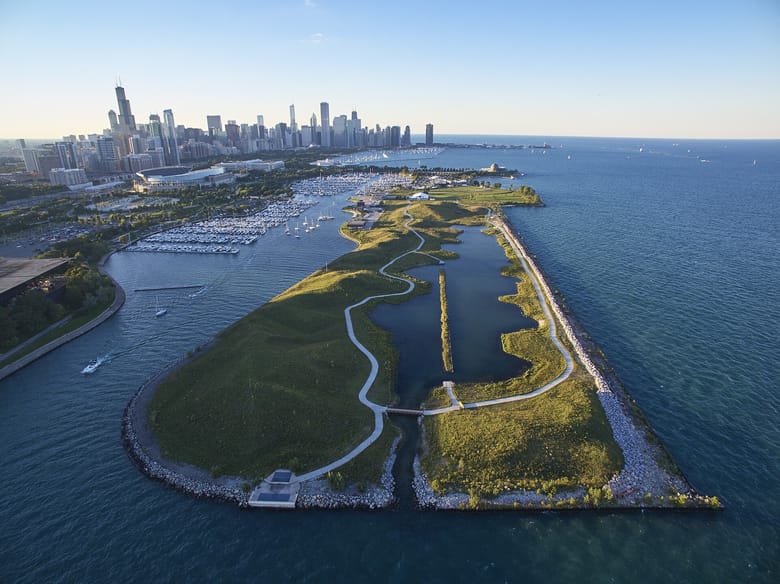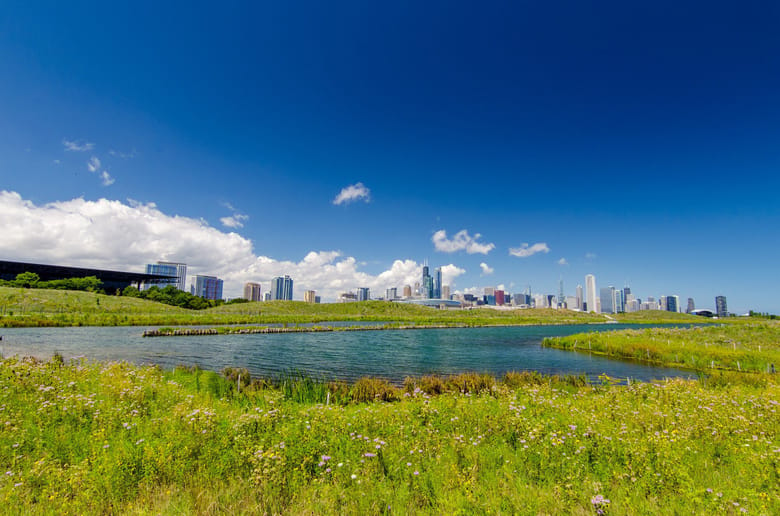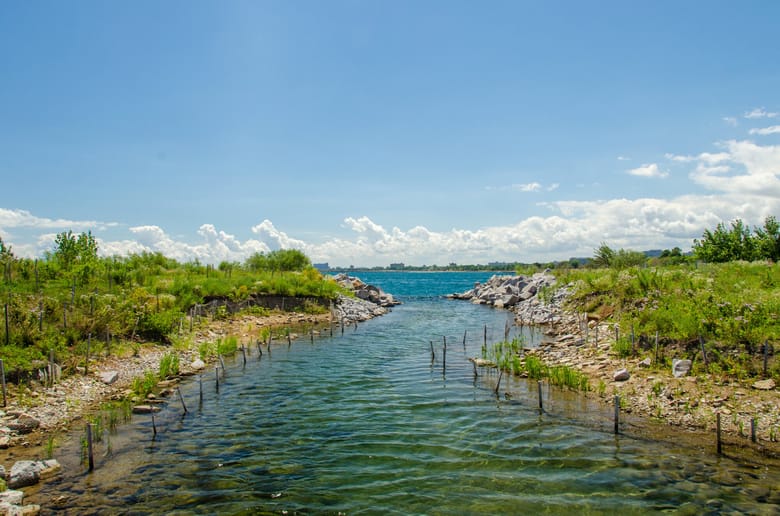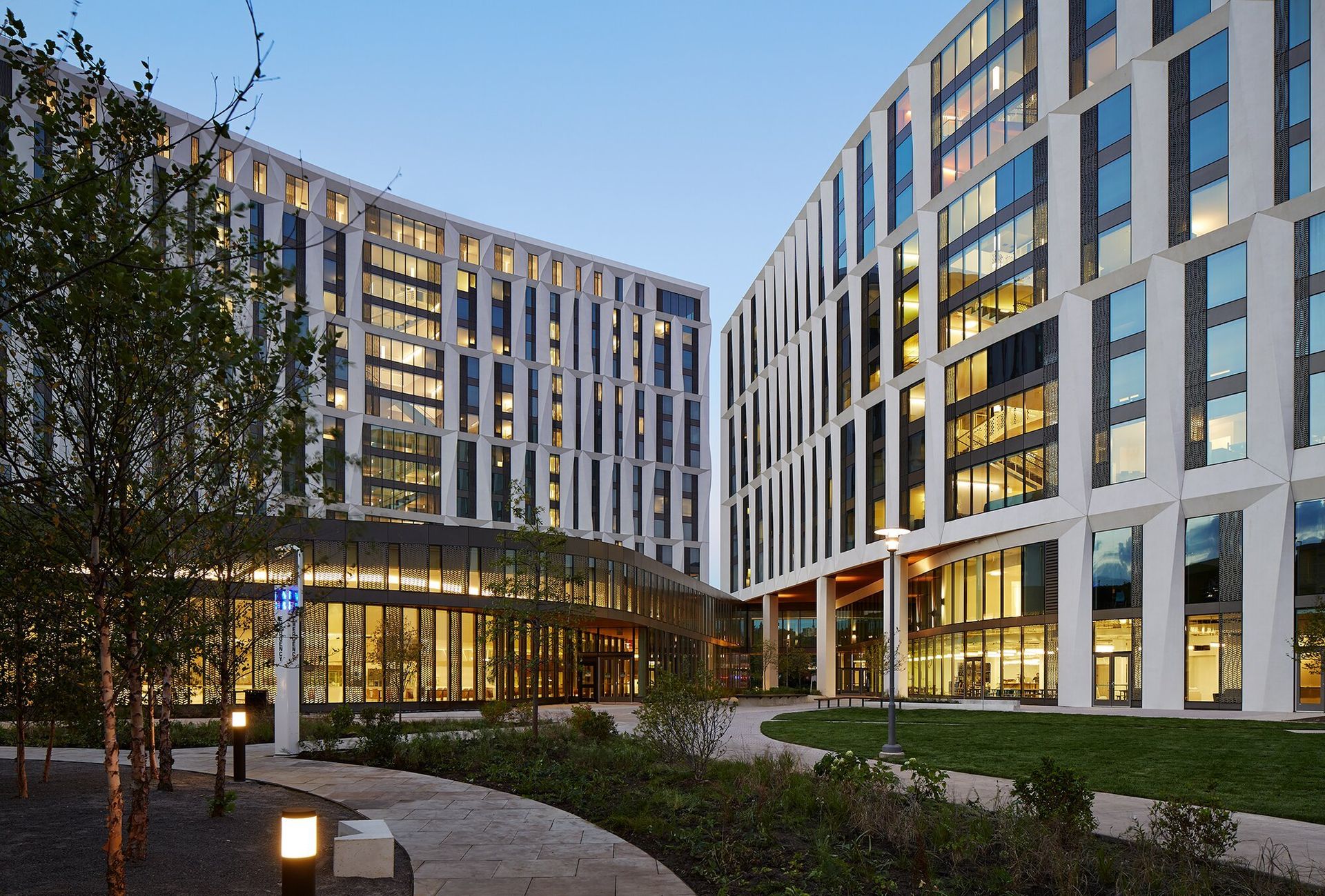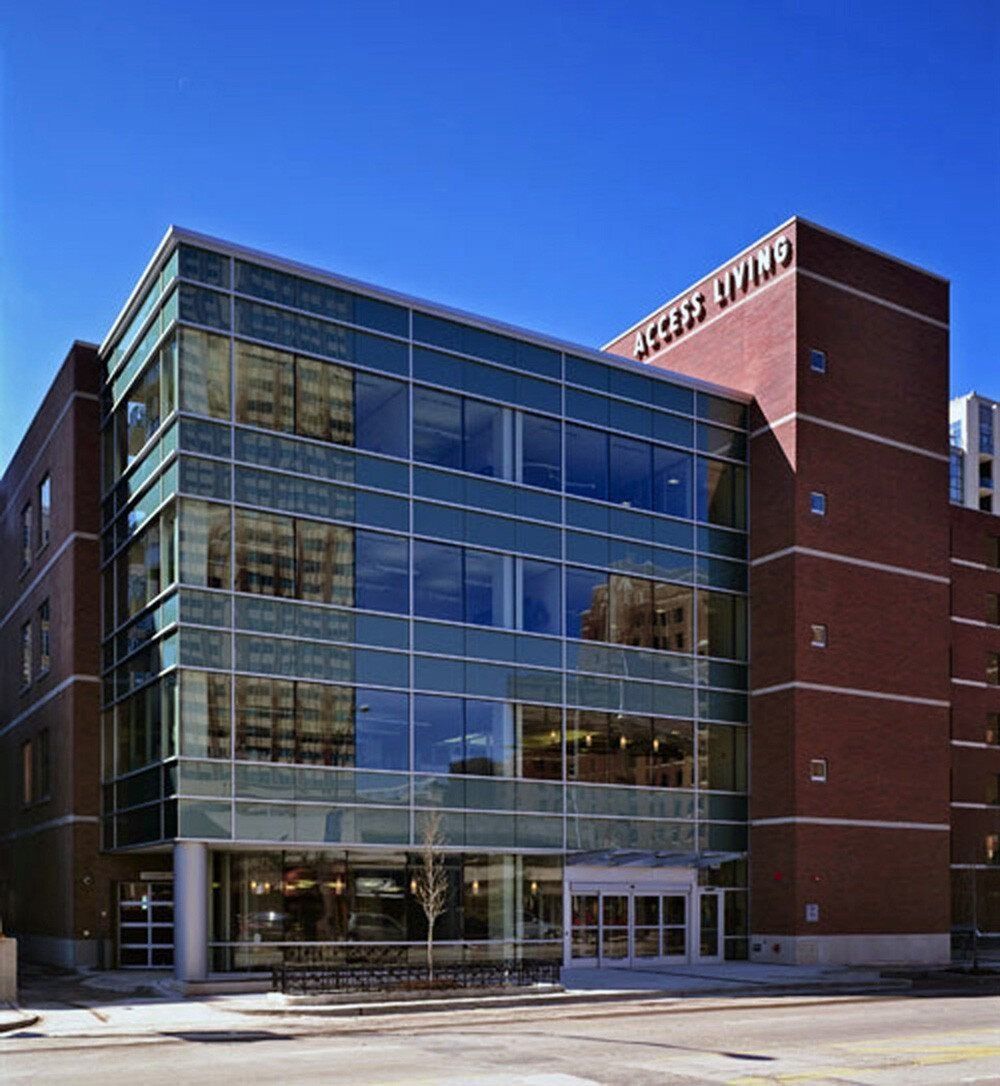ISLAND OF NO LITTLE PLANS
The land known today as Northerly Island was conceived in the 1909 Plan of Chicago as the most northerly in a chain of island parks (the rest of which went unbuilt). Dredging and construction of the space was completed in 1925. By that time, Chicago’s high-flying elites had decided that it should instead serve as a downtown airport. But the onset of the Great Depression kept those plans from taking off for a time. The Adler Planetarium opened at the northern tip of the island in 1930. But crowds really flocked to the island when, in 1933-34, it hosted part of the Century of Progress Exposition, Chicago’s second World’s Fair. Millions of people visited the fair’s colorful Art Moderne buildings to witness visions of future technology. However, these structures were temporary and came down shortly after the fair closed in 1934.
GLOBAL VISIONS
A 1938 Works Progress Administration (WPA) project transformed Northerly Island into a peninsula by connecting it to the mainland with an earthen causeway. But the ongoing Great Depression and the ensuing World War stalled any further development until 1945. That year, the newly established United Nations needed a home, and Northerly Island received serious consideration. Ultimately, it lost out to New York City.
Work began on the long-delayed airport in 1946. The narrower southern tip of the peninsula was widened to better accommodate a runway, and it opened in 1948. An air-traffic control tower was built in 1952, and a modern terminal building opened in 1961. Meigs Field, named to honor a prominent local aviation booster, went on to serve both small airlines and general (private) aviation for decades.
THINGS THAT GO ‘X’ IN THE NIGHT
Northerly Island was always Park District property, and the airport’s lease was up in 1996. A series of political compromises kept Meigs Field open for several more years. But one spring night in 2003, Mayor Richard M. Daley ordered the runway destroyed—citing the security threat posed by a downtown airport. Bulldozers gouged giant Xs in the pavement that forced the airport to close and caused reroutes of several in-progress flights. Daley later justified this as the only way to end the protracted debate over closing the airport. For the price of just over 1 million dollars in federal fines and restitution, the city now had a 91-acre peninsula to redesign.
LAKEFRONT NATURE PRESERVE
A music pavilion opened at the northern end of Northerly Island in 2007. The elegant modernist airport terminal was pressed into service as a park field house. Studio Gang and SmithGroupJJR, in partnership with the U.S. Army Corps of Engineers, released a more ambitious master plan in 2010. It called for the lower 40 acres of the peninsula to be remade into a landscape of gently rolling hills ringing a lagoon. The designers envisioned a serene haven for a diversity of plant, aquatic and animal life.
After five years of construction, and despite the harsh realities of constrained budgets and a sometimes-stormy Lake Michigan, much of this vision has been realized. A mile loop trail running through the lushly planted hills around the lagoon sometimes appears to be the only human incursion into a landscape resembling pre-settlement Chicago. Dramatic skyline vistas remind visitors that the city is not nearly as far away as it seems in this dreamlike escape to the natural world.
Did you know?
At the Century of Progress Exposition in 1933-34, the iconic Sky Ride carried visitors to and from Northerly Island in rocket-shaped cars suspended between two enormous 628-foot towers. They were taller than any of Chicago’s skyscrapers at the time.
Did you know?
By 1955, Meigs Field was the busiest one-runway airport in the United States.
Did you know?
A long section of wooden revetment, made visible in the new lagoon, shows the original edge of Northerly Island before it was expanded for use as an airport.
